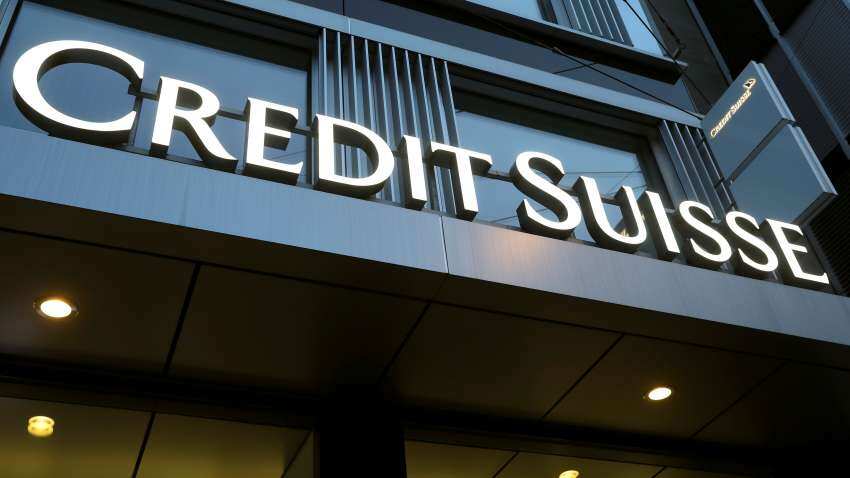5 reasons why Credit Suisse crisis won't have any major impact on India's banking system: Experts decode
Zee Business spoke to various analysts and economists to get a better understanding of how Indian banks are able to safeguard themselves from the spillover effects of crisis at Credit Suisse. They suggest that India's banking system is expected to remain unscathed from the troubles brewing in Switzerland-based bank.

Before the global investors could come out of the shock of the Silicon Valley Bank (SVB) crisis, another turmoil caused due to Credit Suisse stirred serious concerns among various bankers and investors. However, economists and analysts suggest that India's banking system is expected to remain unscathed from the troubles brewing in Credit Suisse as it has a very small presence in the country.
Zee Business spoke to various analysts and economists to get a better understanding of how Indian banks are able to safeguard themselves from the spillover effects of such an economic crisis.
Low exposure in India: Although Credit Suisse is more relevant to India's financial system than Silicon Valley Bank (SVB), it still has very limited operations, according to a report by Jefferies India. “Credit Suisse does have exposure in India, albeit it is very marginal given the size of the Indian banking system. Foreign banks such as Credit Suisse have limited business in India. As a result, the direct impact of the crisis is minimized,” said Aditi Gupta, economist, Bank of Baroda. The Switzerland-based bank, the report said, "has less than Rs 20,000 crore in assets (12th among foreign banks), presence in the derivatives market and funded 60 per cent of assets from borrowings, of which 96 per cent are up to two months. Still, it's small for the banking sector with 0.1 per cent share of assets." Zurich-headquartered Credit Suisse operates in India with just 1 branch.
Also Read: Explained: What is happening at Credit Suisse and how it affects India?
Capital adequacy and liquidity ratios: As pointed out by experts, the Indian banking system has strengthened itself internally over the years in various aspects. Especially in terms of capital adequacy and liquidity ratios, banks have performed well in the past few quarters and it worked as a buffer to safeguard from global economic heat. “The health of the Indian banking system has seen a marked improvement in the years since the Global Financial Crisis, with improved and more stringent regulatory requirements. This has ensured that Indian banks can withstand periods of stress. Capital adequacy and liquidity ratios of several India banks are robust, and sometimes even above the regulatory thresholds, which buffer against any adverse outcome,” added Gupta.
Better macroeconomic factors in India: According to several bankers and economists, India's macroeconomic factors are turning better and it can stand out in this global financial turmoil. The current account deficit looks below 2.5 per cent in FY 23 and economists expect it to go below 2 per cent in FY 24. “Also, given India’s strong macro fundamentals and prudent regulatory framework, the risk of a banking system crisis in India remains practically negligible,” Gupta asserted.
Also Watch: Credit Suisse Crisis Is Not Over? Signs Of Slow Down In US Economy? Decodes Ajay Bagga
Better credit growth and asset quality: Economists asserted the fact that in recent times, banks in India have witnessed a golden period of increased profitability, amidst improvement in asset quality and robust growth in credit. While there will be some pressure on margins as deposit rates start inching up, banks are in a much better shape to cushion its impact.
Strong banking regulations: Be it the SVB crisis or Credit Suisse collapse, Indian banks could safeguard themselves because of the strong banking regulations India has in place, believed analysts. “In India, regulators are strict. As per RBI rules, banks have to mandatorily park 18% of their deposits in the statutory liquidity ratio (SLR) and another 4.5% in the cash reserve ratio (CRR). Also, the asset quality of our banks is strong and improving. The GNPA ratio of SCBs is at a multi-year low of 5%, while NNPAs are just 1.3%. According to the RBI Financial Stability Report (FSR) released in December, stress test results indicate that banks would be able to withstand even severe stress conditions should they materialize,” said Mayuresh Joshi, analyst, and Head- of Equity Research IndiaHead- Equity Research India, William O’Neil, and Company.
Get Latest Business News, Stock Market Updates and Videos; Check your tax outgo through Income Tax Calculator and save money through our Personal Finance coverage. Check Business Breaking News Live on Zee Business Twitter and Facebook. Subscribe on YouTube.
02:28 PM IST











 Swiss central bank calls for more action on capital regulation
Swiss central bank calls for more action on capital regulation SNB vice-chairman says further rate hikes may be needed
SNB vice-chairman says further rate hikes may be needed UBS job cuts are tiny strike at Asia wealth fears
UBS job cuts are tiny strike at Asia wealth fears UBS reports huge 2Q profit skewed by Credit Suisse takeover and foresees $10 billion in cost cut
UBS reports huge 2Q profit skewed by Credit Suisse takeover and foresees $10 billion in cost cut Done Deal! Swiss giant UBS completes takeover of embattled rival Credit Suisse
Done Deal! Swiss giant UBS completes takeover of embattled rival Credit Suisse